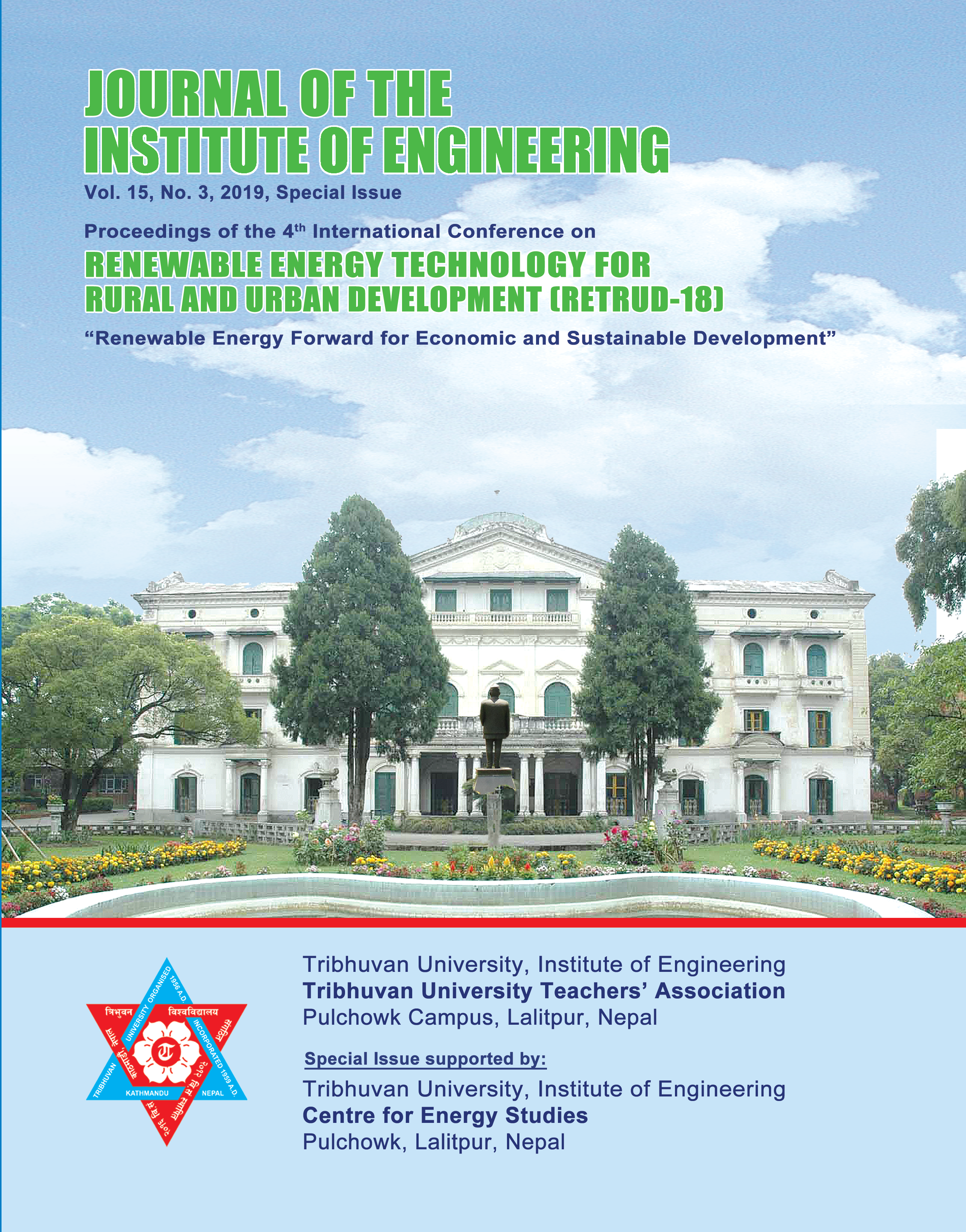Experimental Analysis of Thermal Efficiency of Mud Improved Cookstove With Variation of Different Parameters and Economic Analysis
DOI:
https://doi.org/10.3126/jie.v15i3.32228Keywords:
Firepower, Efficiency, Grate, Combustion Chamber Height, Chimney, Insulation, Net BenefitAbstract
Most of the rural people of Nepal use fuelwood for cooking and space heating in residential sector. Government of Nepal has announced to make Nepal as a smokeless country by replacing traditional cookstoves. Two pot mud improved cookstove is one of the most promoted cookstoves in the context of Nepal. There is a need to study the effects of different parameters on mud improved cookstove for its better performance. The objective of this work is to study the effect of variation of different parameters on two pot mud ICS and identify parameters for its better performance. Power test of cookstove, specially focusing on thermal efficiency, has been performed by changing different parameters. Effect of varying fuel feeding rate, chimney height, opening area of air fuel inlet, inlet area of interconnecting tunnel, combustion chamber height, grate height and insulating material on thermal efficiency have been studied individually. Then cookstove has been developed by different best combinations such as a) geometrical parameters b) use of grate and insulations in best geometrical parameters and formation of channel on the opening. Thermal efficiency of modified cookstove increased from 18% to 25.6%; i.e. the increment of 7.60%. Economic analysis of different thermal efficiencies cookstove has been performed.
Downloads
Downloads
Published
How to Cite
Issue
Section
License
The Copyright is held by Journal of the Institute of Engineering, IOE, TU




